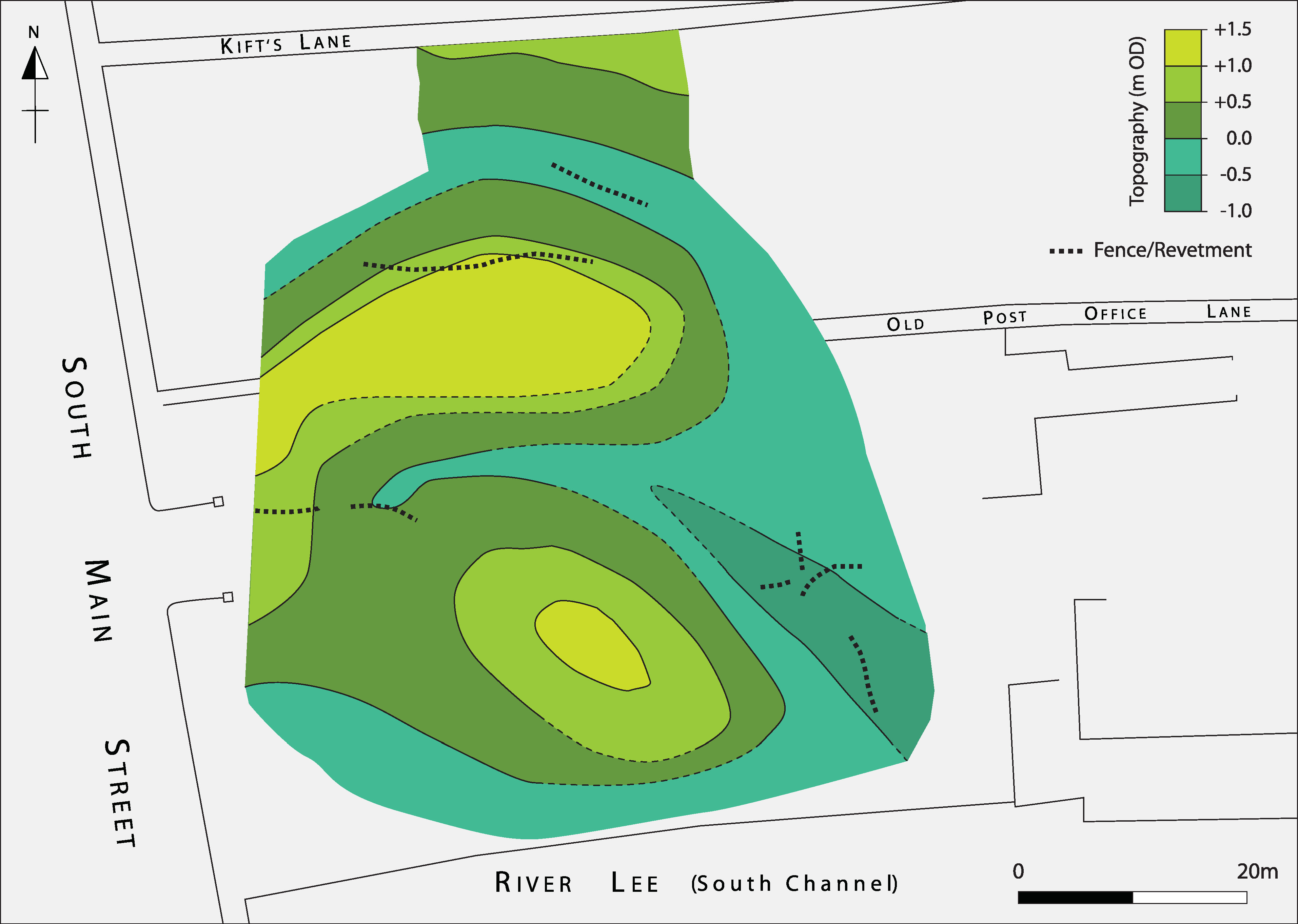At the locus of Cork…
Cork City is located in the lower part of the River Lee Valley. In the prehistoric period its landscape evolved from riverine to estuarine (Beese 2014). This change happened because sea-levels were rising along the south coast of Ireland. The story begins when a river system was established in the Lee valley soon after the last glaciation, which ended 11,700 years ago. The fluvial environment of the early and mid-Holocene persisted into the Late Mesolithic or Early Neolithic, when it was overtaken by an estuary as the marine transgression arrived from the east.

The wetland, shown right, then remained unmodified until the end of the eleventh century. Then Hiberno-Norse people began to reclaim the estuary by diverting channels, building canals and raising ground levels. They did this by manually fill the estuary with silt, occupying first the reed-beds along the sides of the estuary, and then advancing into the intertidal area of mudflat and tidal channels. There is plenty of evidence for the medieval engineering because timber revetments and other reclamation structures have been discovered in recent archaeological excavations. Eventually, an organised settlement was built on South Island. This style of land-claim was continued by the Anglo-Normans who extended the occupied area across the full width of the Lee valley, so forming the medieval core of the city.
Anthony Beese 2014. The medieval land-claim. In: Hurley, M.F. and Brett, C. (eds). ‘Archaeological excavations at South Main Street, 2003-2005’, 13-26. Cork City Council.
At 36-48 South Main Street…

High quality reconstructions of previous environments are possible when these are based on archaeological excavations, and when additional evidence is available from engineering boreholes. On-site logging of boreholes and recovered samples is recommended.
Reference
Beese Anthony. 2014. The medieval land-claim. In M. F. Hurley and C. Brett (eds.). Archaeological excavations at South Main Street [Cork] 2003-2005, 13-26. Cork City Council.
Note on the term land-claim
The new phrase, land-claim, is in some ways preferable to the familiar term, reclamation, because at Cork, the Hiberno-Norse people converted an estuary into dry, habitable land, rather than restoring dry land that had been invaded by the sea. On the other hand, reclamation is now so well established that its usage has widened to cover both restoration and conversion. And so, are both terms appropriate?
